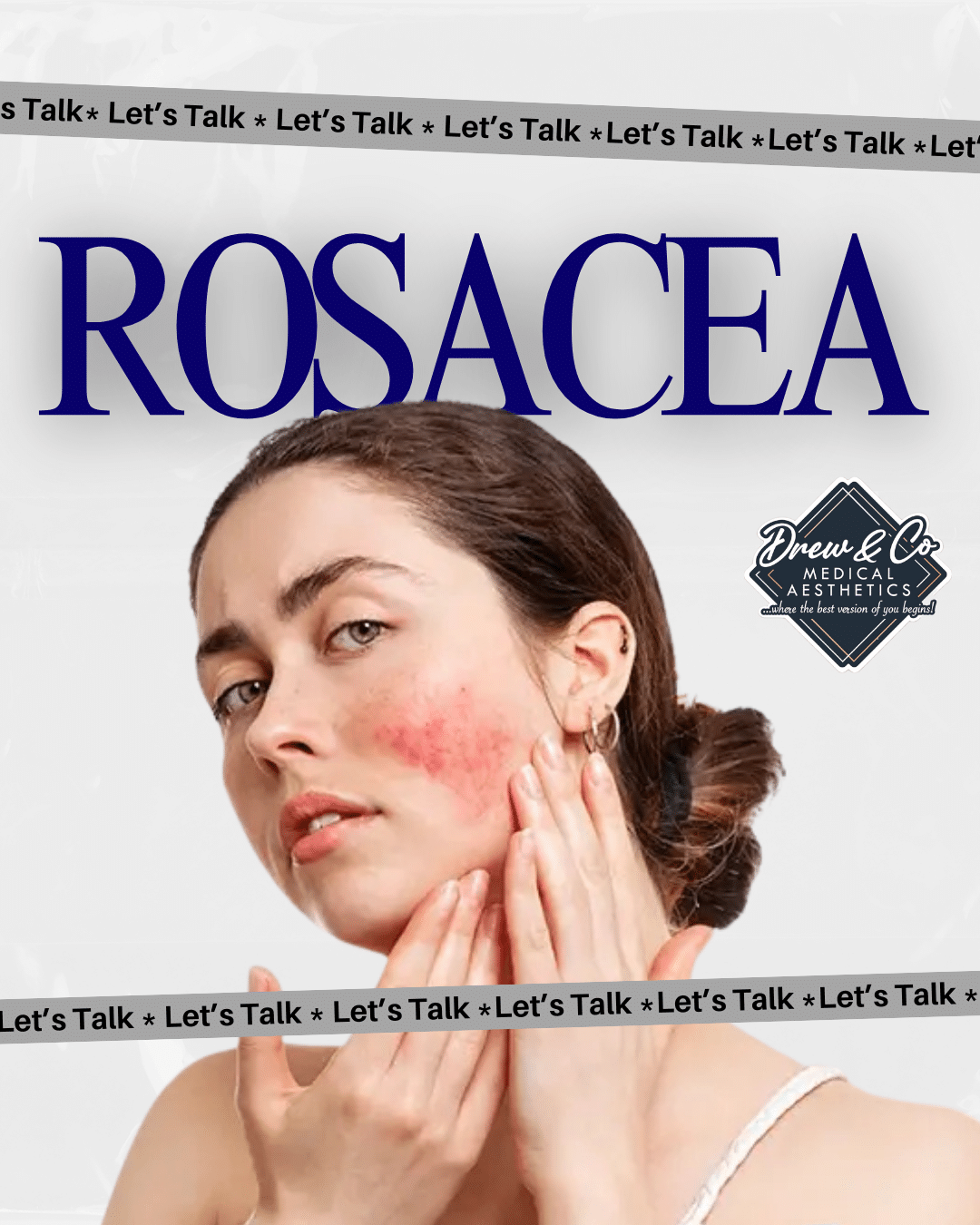🌟 Let’s Talk About Rosacea! 🌟
Understanding Rosacea, Its Symptoms, Triggers, and Effective Treatment Options
Rosacea is a common but often misunderstood chronic inflammatory skin condition that affects millions of people. It most often appears as redness, visible blood vessels, and acne-like breakouts, typically on the cheeks and nose. For some, it also includes eye irritation and skin thickening.
Rosacea symptoms can flare up and subside over time, and many people report that factors like sun exposure, emotional stress, or spicy foods can bring on or worsen symptoms.
While there’s no cure, rosacea can be effectively managed with the right treatments and lifestyle choices.
🧬 The Four Types of Rosacea
Did you know there are four distinct types of rosacea, each with unique symptoms?
1. Vascular Rosacea
-
Flushing and persistent redness, usually on the cheeks and nose
-
Visible small blood vessels (telangiectasia)
2. Inflammatory Rosacea
-
Redness with pustules or papules that resemble acne
-
Irritated, sensitive skin
3. Phymatous Rosacea
-
Thickened skin, often around the nose (rhinophyma)
-
Enlarged, bumpy texture — more common in men
4. Ocular Rosacea
-
Red, itchy, or watery eyes
-
Grittiness, styes, and inflamed eyelids
🔍 Note: Many patients experience overlapping symptoms from more than one type. A proper diagnosis from a healthcare professional is essential.
Common Rosacea Symptoms
-
Persistent facial redness and flushing
-
Acne-like bumps or pustules
-
Visible blood vessels (especially on the cheeks and nose)
-
Thickened skin, especially around the nose
-
Eye irritation, including redness, dryness, and swelling
Common Rosacea Triggers
Certain factors can trigger or worsen rosacea symptoms, including:
-
Sun exposure or sunburn
-
Hot or cold weather
-
Emotional stress
-
Spicy foods or alcohol
-
Harsh skincare products
-
Strenuous exercise
Rosacea Self-Care Tips
Managing rosacea starts with gentle care and lifestyle awareness:
-
✅ Use rosacea-friendly skincare: Avoid harsh ingredients like alcohol, menthol, camphor, and strong exfoliants.
-
✅ Track your triggers: Keeping a skin journal helps identify what causes flare-ups.
-
✅ Maintain a healthy lifestyle: Hydration, balanced nutrition, and stress management all support skin health.
Treatment Options for Rosacea
Rosacea treatments often combine at-home care with professional therapies:
🧴 Topical Medications
-
Prescription creams to reduce inflammation and redness
💊 Oral Medications
-
Antibiotics for moderate to severe flare-ups
💡 Intense Pulsed Light (IPL) Therapy
-
Reduces redness, visible vessels, and inflammation
🔬 Laser Therapy
-
Targets deeper skin layers to minimize chronic flushing, thickened skin, and spider veins
Our In-Clinic Rosacea Laser Treatments
At our medspa, we offer advanced laser therapies for rosacea using a combination of 1064 Nd:YAG Laser and Intense Pulsed Light (IPL) treatments to provide a comprehensive and personalized solution.
✅ 1064 YAG Laser
-
Penetrates deep into the skin to treat underlying blood vessels
-
Reduces persistent redness and improves overall skin tone
-
Ideal for moderate to severe rosacea
✅ Intense Pulsed Light (IPL)
-
Targets surface redness and broken capillaries
-
Uses broad-spectrum light to reduce visible blood vessels and flushing
-
Best for superficial symptoms and light-to-moderate rosacea
🤝 Why Combine IPL & YAG?
By combining both technologies, we treat rosacea at multiple depths, targeting visible symptoms and deeper vascular issues. The result? Clearer, calmer, more even-toned skin with longer-lasting relief.
✨ Ready to Calm Your Skin?
If you’re struggling with rosacea or frequent flushing, you’re not alone — and you don’t have to “live with it.” With the right care, you can regain confidence in your skin. Our experienced team is here to help you find the treatment plan that works for you.
📞 Contact us today to schedule your consultation and learn more about our laser rosacea treatments with IPL and 1064 YAG technology.

